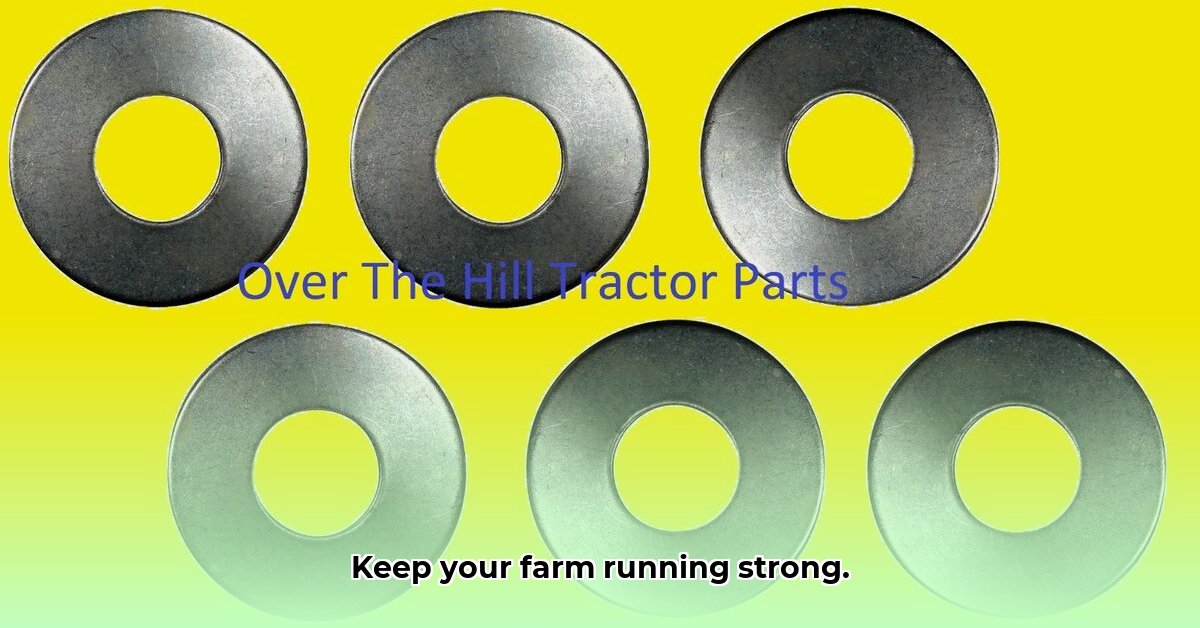
Over the Hill Tractor Parts: Extending Your Farm's Life
Keeping older farm equipment running isn't just about nostalgia; it's a financially smart and environmentally responsible practice. The demand for parts for older tractors—what we call "over the hill" tractor parts—is surging. Farmers understand these machines are reliable, often easier to repair than modern equivalents, and represent a significant, sustainable investment. Maintaining them saves money, reduces the need for new equipment, and minimizes waste—a significant win for sustainable agriculture. This highlights the enduring value of quality engineering and simple design. For advice on selling your old tractor when you're done with it, check out this helpful guide: Selling a Used Tractor.
The Unexpectedly Strong Market for Vintage Tractor Parts
The market for vintage tractor parts is thriving. Why? Farmers value their older tractors for their mechanical simplicity, ease of maintenance, and lower risk compared to new purchases. These tractors provide years of reliable service with proper care. This directly benefits the environment by extending the lifespan of existing machinery, reducing the manufacturing of new equipment, and minimizing waste. Keeping these workhorses running is a clear example of sustainable agricultural practices.
How can we capitalize on this growing demand? A key factor is the rising awareness of the environmental and economic benefits of extending the life cycle of existing equipment. This resonated strongly among farmers who are increasingly seeking sustainable practices.
The Challenges of Keeping the Old Machines Running
However, sourcing and supplying these parts presents challenges. The supply chain is complex, involving numerous manufacturers and distributors, leading to delays, shortages, and inconsistent part quality. Ensuring these parts meet sustainability standards adds another layer of complexity. We must consider material sourcing, manufacturing processes, and the overall environmental impact. Questions regarding sustainably harvested materials and environmentally friendly manufacturing processes are crucial. What are the long-term implications for sustainable agriculture if these issues are not addressed?
Opportunities for Growth and Improvement in the Vintage Tractor Parts Market
Despite the challenges, the market presents significant growth opportunities. A strong online presence is crucial. A user-friendly website with robust e-commerce capabilities can expand reach, improve customer access, and enhance customer service. Strategic partnerships with parts distributors can streamline the supply chain, ensuring reliable sourcing and efficient delivery. These collaborations are vital for success in this niche market.
What innovative strategies can further improve the efficiency and sustainability of this market? Collaboration among stakeholders is key, including the development of standardized sustainability practices and certifications.
Building Trust and Transparency: Sustainability in Action
Transparency builds customer trust. Farmers want to understand part durability, longevity, material sourcing, and manufacturing processes. Open communication is paramount. By adopting sustainable practices throughout the supply chain—from material sourcing to manufacturing—businesses enhance their reputation and attract environmentally conscious customers. This is not just good for the planet; it's good for business.
Actionable Steps for Success in the Vintage Tractor Parts Market
Here are actionable steps for different players in the vintage tractor parts market:
For Over the Hill Tractor Parts Businesses:
- Short-term (0-1 year): Invest in a user-friendly website with e-commerce functionality; significantly improve customer service; build relationships with key suppliers. (Efficacy: Improved customer satisfaction and sales growth)
- Long-term (3-5 years): Develop and communicate a comprehensive sustainability strategy; conduct lifecycle analyses of parts to understand their environmental impact; share this information transparently. (Efficacy: Enhanced brand reputation and customer loyalty)
For Farmers (Customers):
- Short-term: Demand improved online access to parts and reliable customer support. (Efficacy: Reduced downtime and improved operational efficiency)
- Long-term: Insist on parts with guaranteed longevity and readily available sustainability information; consider extended warranties. (Efficacy: Increased equipment lifespan and reduced replacement costs)
For Parts Suppliers:
- Short-term: Strengthen partnerships with other suppliers; negotiate favorable pricing and delivery schedules. (Efficacy: Improved supply chain efficiency and profitability)
- Long-term: Prioritize sustainably sourced materials; explore collaborative sustainability initiatives; consider relevant certifications. (Efficacy: Enhanced environmental performance and brand reputation)
For Competitors:
- Short-term: Differentiate through superior online presence and exceptional customer service. (Efficacy: Increased market share and customer loyalty)
- Long-term: Invest in R&D for environmentally friendly part production; focus on building brand trust. (Efficacy: Sustainable competitive advantage and long-term profitability)
Assessing Risks and Navigating Uncertainties
| Risk Category | Likelihood | Impact | Mitigation Strategy |
|---|---|---|---|
| Supply Chain Disruptions | Medium to High | High | Diversify suppliers; build strong, long-term partnerships; secure alternative sourcing. |
| Weak Website/E-commerce | High | Medium to High | Invest in website improvements; enhance SEO and marketing; expand online reach. |
| Lack of Customer Trust | Medium | Medium to High | Improve website transparency; highlight sustainability practices; offer warranties. |
| Intense Competition | High | Medium | Focus on niche markets; offer superior customer service and specialized expertise. |
Regulatory Compliance
Compliance with labeling, safety, and environmental standards for agricultural equipment parts is critical. Accurate claims about part compatibility and performance are non-negotiable.
A Sustainable Future for Vintage Tractor Parts
The market for over-the-hill tractor parts is dynamic. By embracing e-commerce, prioritizing sustainability, and proactively managing risks, businesses can thrive and contribute to a more environmentally responsible future for agriculture. It's about maintaining a vital legacy, preserving valuable equipment, and building a sustainable future for farming.